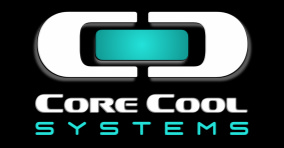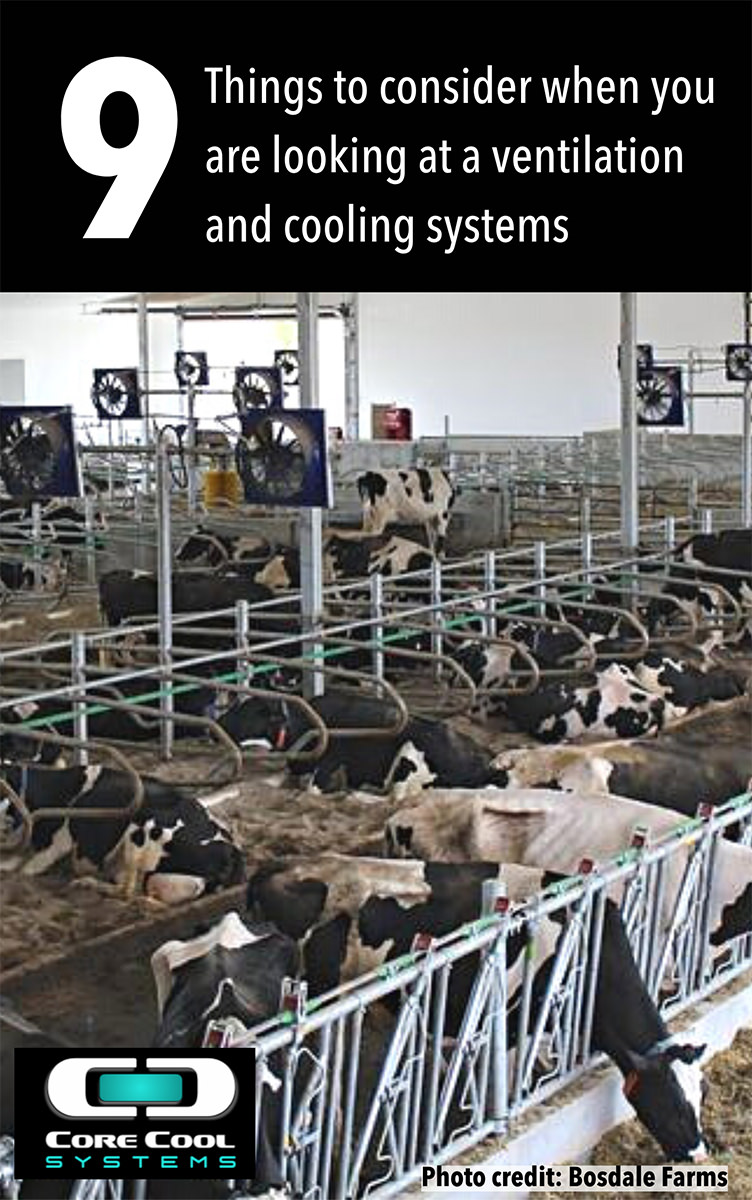Title search: ✖
|
Show All (52)
Cooling Cows (29) Cow Comfort (6) Dry Cow Cooling (1) Fall Lameness (2) FAQ's Answered (7) Metabolic Issues (2) Reproduction (2) Why Focus on Core Body Temperature (5)
FAQ - Why should I cool my dry cows? What impact does heat stress have on the cow, her next lactation, the calf in utero
Why is it important to keep cows' core body temperature cool, and how does Core Cool Systems achieve this?
Maximizing Dairy Herd Reproductive Health: Understanding the Impact of Heat Stress and Investing in Cooling Solution.
Are your summer electricity bills causing you to shudder? Maybe your barn fans are one of the biggest culprits.
Why is it important to clean your fans before summer? Are dirty fans costing you time, money and energy?
|
Is your Holding Area a Hot Zone?
Don't let this tiny area be the cause of huge problems.You have tons of fans in your holding area, a soaker system too, but your cows are still suffering. Your production is dropping, and your reproduction is plummeting.As temperatures rise, the threat of heat stress becomes a painful reality on many farms across North America and worldwide. Holding areas become incredibly hot in a very short amount of time, even during colder weather. In the summer months, cows are already struggling to stay cool. Holding pens can become a death zone. Did you know a 1,500 lb cow producing 80 lb of milk per day generates 5,100 BTUs of heat per hour? To put that into perspective, each cow produces about the same amount of heat as a 1,500-watt space heater! Now imagine 100 cows crowded into a holding area. That's a ton of heat to deal with on top of the ambient temperature. In a free stall setting, cows can generate 40 to 80 BTUs per square foot. Crowded together in the holding pen waiting to be milked, the heat generated by cows can jump to 375 to 525 BTUs per square foot. Depending on the configuration and location of the parlour/holding area relative to neighbouring buildings, cool outside breezes cannot reach the naturally ventilated holding area. No matter how many fans you have in the holding area, they cannot cool the air. All they do is move that hot air around. Water needs to be added to the formula to provide cooling; it is the only way to manipulate her core body temperature. As the water droplets evaporate off her coat, they produce a chemical reaction that causes a chilling effect. This chilling effect cools her blood flowing close to the surface of her skin; this cooled blood is pumped around her body, lowering her Core Body Temperature and keeping her in her thermal comfort zone. Did you know High-yielding adult cows can exhale four gallons/15 litres of water per day through their lungs? That means one cow can expel a pint/1 litre of water into the air every time she is in the holding pen. That's why it's imperative Temperature Humidity Index(THI) in the holding area is monitored at all times. The rate and flow of water need to be adjusted to consider the rise and fall in humidity throughout the day. It's also the reason airspeed is critical. Powerful, high-velocity air is needed to exhaust moisture saturated air from the holding area quickly and often. Air intake is critical in this humidity-laden area. Fresh air gathers moisture and works to keep humidity down as much as possible. It's a tightrope walk. A system that automatically adjusts itself to the conditions minute by minute is needed to ensure cows are as cool and comfortable as possible. Did you know, It can take up to six hours for CBT to lower back to normal after being heat-stressed in the holding area? What happens then? She goes back into the holding area, and her temperature goes right back up again. She never gets to find her cool comfort zone. Her core body temperature is always elevated. Instinct tells her that hot cow that the fastest way to cool her Core Body Temperature (CBT) is to lower her feed intake. Rumination generates massive amounts of heat. The last thing a hot cow wants to do is eat; when cows don't eat, their production drops. Maintaining cows' CBT in the Holding area can have massive impacts on production levels. Heat gained in the holding area can also mean increased standing time in the pens while the cow tries to dissipate heat: time that she should spend lying down. The cow's basic instinct kicks in again and tells her the next best way to lower her CBT is to stand and pant. So she stands or perches and pants to find relief, to try to cool herself. Multiple studies have proven that any time there is less than 10 hours per day of lying time substantially increases the risk of lameness. Fall lameness can cost hundreds of dollars in treatment, and in worse cases, can force her to be culled way before her time. It has been proven on-farm and in research projects that summer heat stress also significantly impacts summer reproduction levels. The heat cycle, the duration and the intensity of the cycle are all dramatically decreased. It becomes harder and harder to see cows in heat and get them inseminated. The other problem with heat stress is fertility and reproduction, which happens in early embryonic development. The last few days right before the cow ovulates and the first couple of days after ovulation, the early embryo is highly susceptible to increased body temperatures. The result of heat stress at this time during the cycle can be catastrophic to the embryo. This early embryo is highly susceptible to elevated maternal body temperature. We see a decrease in the conception rate, which is associated primarily with the increased pregnancy loss. Both these contribute to a negative effect on reproduction. Core Cool Systems offers a solution to the woes of Holding Area heat stress. A fully automated system that continuously monitors the environment in your holding area, so you don't have to do a thing.
Stay up to date on all the Cool News, subscribe to our newsletter. Share: https://www.corecoolsystems.com/blog/Blog11/Is-your-Holding-Area-A-Hot-Zone-Don-t-let-this-tiny-area-be-the-cause-of-huge-problems Share Category "Cooling Cows": |

